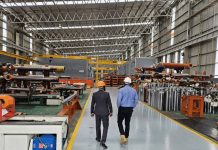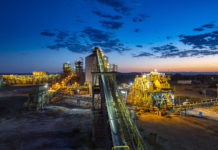With copper now hovering around $6 000 a tonne, the red metal is enjoying its strongest and most sustained price rally since the depths of the global commodity slump in January 2015, when it was languishing at around $4 300 a tonne due to slower Chinese demand.
Investment research houses like Citi Research and Goldman Sachs have issued bullish reports on copper this year – with Citi predicting the price will hit $7 000 a tonne before year-end, and $8 000 a tonne by 2020.
A July 2017 news report in Metal Bulletin echoes this sentiment: “The copper industry has been shrouded by doom and gloom over the past couple of years, but with prices now up around 40% from previous lows, companies like Freeport-McMoRan and Codelco are restarting stalled operations and even considering expansion.”
Demand from China is picking up again, but world supply cannot keep up
The reason for copper’s resurgence is, as always, supply and demand.
More specifically, demand has been picking up again in China, which is the world’s leading consumer of copper, absorbing more than 40% of world production. Infrastructure and car manufacturing – both big consumers of the metal – are showing high growth. And there is growing use of copper in the electrical wiring for the country’s power grid, which is undergoing aggressive expansion.
Also driving the copper price are a pick-up in global manufacturing activity, and hopes about President Trump’s much-talked-about $500-billion infrastructure programme in the United States. However, the US’s share of world copper consumption is only 14%, versus more than 62% for China and Asia, so the demand driving the copper price is clearly more global in nature.
Whilst demand has been increasing, available supply from the world’s copper mines has not been able to keep up. There are both short-term and long-term reasons for this.
In the short term, there have been serious disruptions to supply in recent months that have kept several thousand tonnes of copper off the market every single day. They include prolonged strikes at mines in Chile and Peru, the world’s two largest copper-producing nations, and a stoppage in production at Indonesia’s massive Grasberg Mine.
In the longer term, there is shortage of new copper-production capacity in the world, and this poses a far more serious challenge to supply.

Most of the world’s mines radically cut back their capital expenditure on new mining projects and expansion in 2014 to conserve cash and survive the global price slump at the time. Now that prices are starting to recover, expansion plans are back on the agenda.
According to a June 2017 report by BMI Research, the global copper project pipeline – the number of new copper-mining projects on the drawing board – now consists of 274 greenfield projects and 32 brownfield expansions. “This is a significant addition to the 178 copper mines currently in operation worldwide,” says the report.
However, it takes several years between the decision to start a new copper-mining project and full production, so this supply deficit is not going to be solved overnight. According to Citi Research, the cutback in capital expenditure of recent years has “eviscerated” the copper project pipeline for much of the remainder of the current decade, and will “set the market up for the most sustained price rally since 2010”.
Interestingly, Zambia has partially bucked the supply-deficit trend, and its copper-production capacity has greatly improved over the last few years despite the worst effects of the recent global mining slowdown.
Projects started before the slowdown have recently come to fruition. For example, First Quantum Minerals’ Kansanshi Mine brought a new $900-million smelter into operation in 2015, while FQM’s new Sentinel Mine in Kalumbila started production in the same year and has been quietly ramping up to full production. Glencore’s Mopani Copper Mine on the Copperbelt embarked on a $1.1 billion infrastructure upgrade in 2016 involving the sinking of three new shafts; the first ore was hoisted from the main shaft, the Synclinorium, earlier this year.
Other mining operations in Zambia that had been closed in response to the global mining slowdown have now been reopened, and laid-off workers are starting to be rehired. Konkola Copper Mines, for example, recently re-opened its Nchanga Open Pit operation, which had been put on care-and-maintenance in 2015.
So, the outlook for copper, the mainstay of the Zambian economy, is looking far more positive than it has been for a long time. And, most importantly, it is a long-term outlook based on solid supply-and-demand fundamentals.
“There are many things that affect the price of a metal, but at the end it all comes down to three things: demand, supply and investors’ sentiment,” says a March 2017 market analysis in Metal Miner. “All these are looking more bullish for copper compared to last year.”
However, these positive developments are not meant to suggest that Zambia now has all the production capacity it needs.
The bulk of Zambia’s copper-production capacity comes from mining ventures that were initiated several years ago or longer when power tariffs, royalties, duties and taxes were all much lower than they are now. For example, FQM’s Sentinel Mine in North-Western province is the country’s newest greenfield copper mine, but the investment decision to build it was taken in 2011, more than six years ago.
Given that it takes several years between the decision to invest and full production, the investment decisions that will create tomorrow’s mines need to be taken today. This is all the more important as growth in Zambia’s copper production will start to slow after 2019, according to a 2015 report by the World Bank – and 2019 is barely two years away, suggesting the country is already running behind schedule.
“Along with the decline in production, there will be a decline in government revenue, mining industry jobs and foreign exchange,” the report says. “However, production levels can increase over the long run if there is a new wave of investment”.
The current positive outlook for the copper price is a timely reminder for Zambia’s mines to grasp the opportunity and invest in new production, and for the government to create the investor-friendly policy climate that encourages those decisions.
See also: Why the copper price fluctuates


























